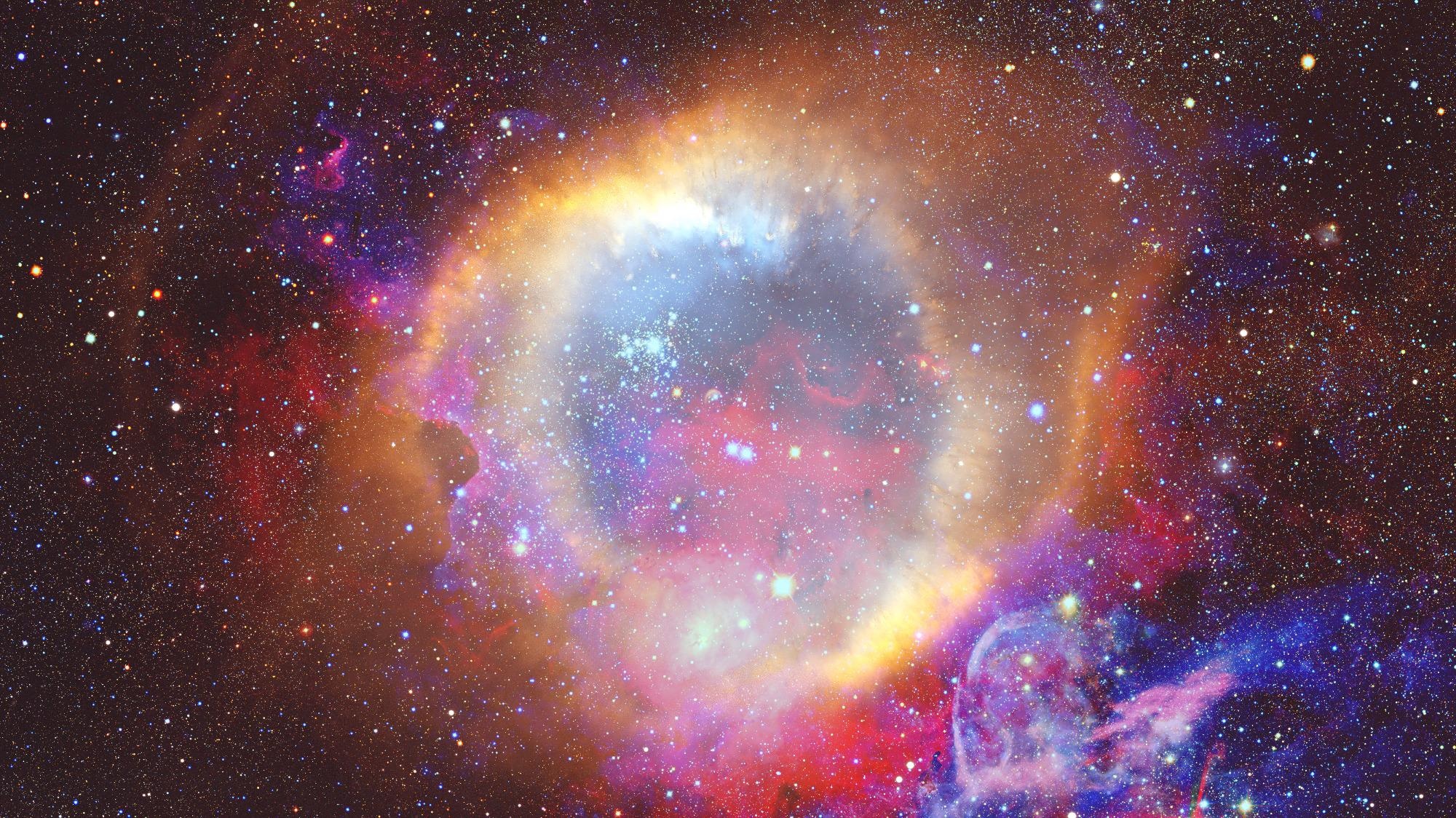New observations of the Cosmic Microwave Background radiation that permeates the universe has confirmed its age of 13.77 billion years… Give or take 40 million years!
 Image Credit: NASA Images/shutterstock
Image Credit: NASA Images/shutterstock
A team of astronomers has observed the oldest known light in the universe — photons that have been traveling to us for 99.99% of its lifetime — confirming that the universe is 13.77 billion years old. The observation — in combination with some clever ‘cosmic geometry’ — could settle the debate over the universe’s age that was sparked following controversial findings released in 2019.
The new research conforms to both estimates of the age of the universe provided by the standard model of cosmology and to measurements of the same light — the cosmic background radiation (CMB) — made by the European Space Agency’s Planck satellite.
The team’s findings are discussed in two papers published in the Journal of Cosmology and Astroparticle Physics by respective lead authors Steve Choi¹, NSF Astronomy and Astrophysics Postdoctoral Fellow at the Cornell Center for Astrophysics and Planetary Science, and Simone Aiola², a researcher at the Flatiron Institute’s Center for Computational Astrophysics.
The team reached its conclusion by examining data collected by the National Science Foundation’s Atacama Cosmology Telescope (ACT), located atop Cerro Toco in the Atacama Desert, Chile. The goal of the ACT project is to enable cosmologists and astronomers to study how the universe began, what it is made of, and how it evolved to its current state. It achieves this by allowing them to study the CMB.
The Cosmic Microwave Background and the Last-Scattering
The CMB is electromagnetic radiation that represents the ‘fossilized remains’ of the last scattering — an event in the early universe when the temperature dropped low enough to allow electrons and protons to form hydrogen atoms.
The ‘scattering’ element refers to the deflection of photons by free electrons. Thus, this coupling meant that the universe suddenly went from opaque to transparent to radiation, with the vast reduction in free electrons allowing photons to begin traveling freely.
This occurred about 30,000 after the initial rapid expansion of spacetime that we call the ‘Big Bang’ — before the formation of stars and galaxies — and resulted in a cool radiation source, evenly distributed across the universe — the CMB.
To imagine this, picture staring into a cloud of fog. What you are actually seeing is a surface created by photons scattering off water droplets. The closer that scattering is, the denser the fog and the less you can ‘see-through’ that scattering. That is is analogous to the surface created by the last scattering.
The fact that the CMB predates stars and galaxies and is so evenly distributed — containing only small dips and rises in temperature — means it makes an excellent probe to investigate the early universe.
Settling the debate around the age of the universe is definitely an important part of ACT’s mission. That’s exactly what the team involved in this research seems to have done.
What’s My Age Again?
The new duo of studies follows the findings of a research team in 2019 that posited the movements of galaxies suggest that the Planck-estimate of the universe’s age is incorrect. This previous team found ACT measurements suggested that the universe was younger than previously believed and than the Planck mission results showed.
This caused astrophysicists and scientists in related fields to worry that one set of measurements could be wrong or even that an entirely new cosmological model could be needed to explain the Universe’s evolution. Thankfully the ACT team seems to have resolved this disparity.
In order to reach this unification, the team used ACT data collected between 2013 and 2016. This enabled them to make a measurement of the angular scale of features in both the divergence-like polarization and the temperature anisotropy in the CMB, tracing both the velocity and density during the last scattering.
“Now we’ve come up with an answer where Planck and ACT agree. It speaks to the fact that these difficult measurements are reliable.”
Simone Aiola, Researcher, Flatiron Institute’s Center for Computational Astrophysics.
References
¹ Choi. S. K., Hasselfield. M., Aiola. S., et al., [2020], ‘The Atacama Cosmology Telescope: a measurement of the Cosmic Microwave Background power spectra at 98 and 150 GHz,’ Journal of Cosmology and Astroparticle Physics, [https://iopscience.iop.org/article/10.1088/1475-7516/2020/12/045]
² Naess. S., Aiola. S., Austermann. J. E., et al., [2020], ‘The Atacama Cosmology Telescope: arcminute-resolution maps of 18 000 square degrees of the microwave sky from ACT 2008–2018 data combined with Planck,’ Journal of Cosmology and Astroparticle Physics, https://iopscience.iop.org/article/10.1088/1475-7516/2020/12/046/pdf
Disclaimer: The views expressed here are those of the author expressed in their private capacity and do not necessarily represent the views of AZoM.com Limited T/A AZoNetwork the owner and operator of this website. This disclaimer forms part of the Terms and conditions of use of this website.